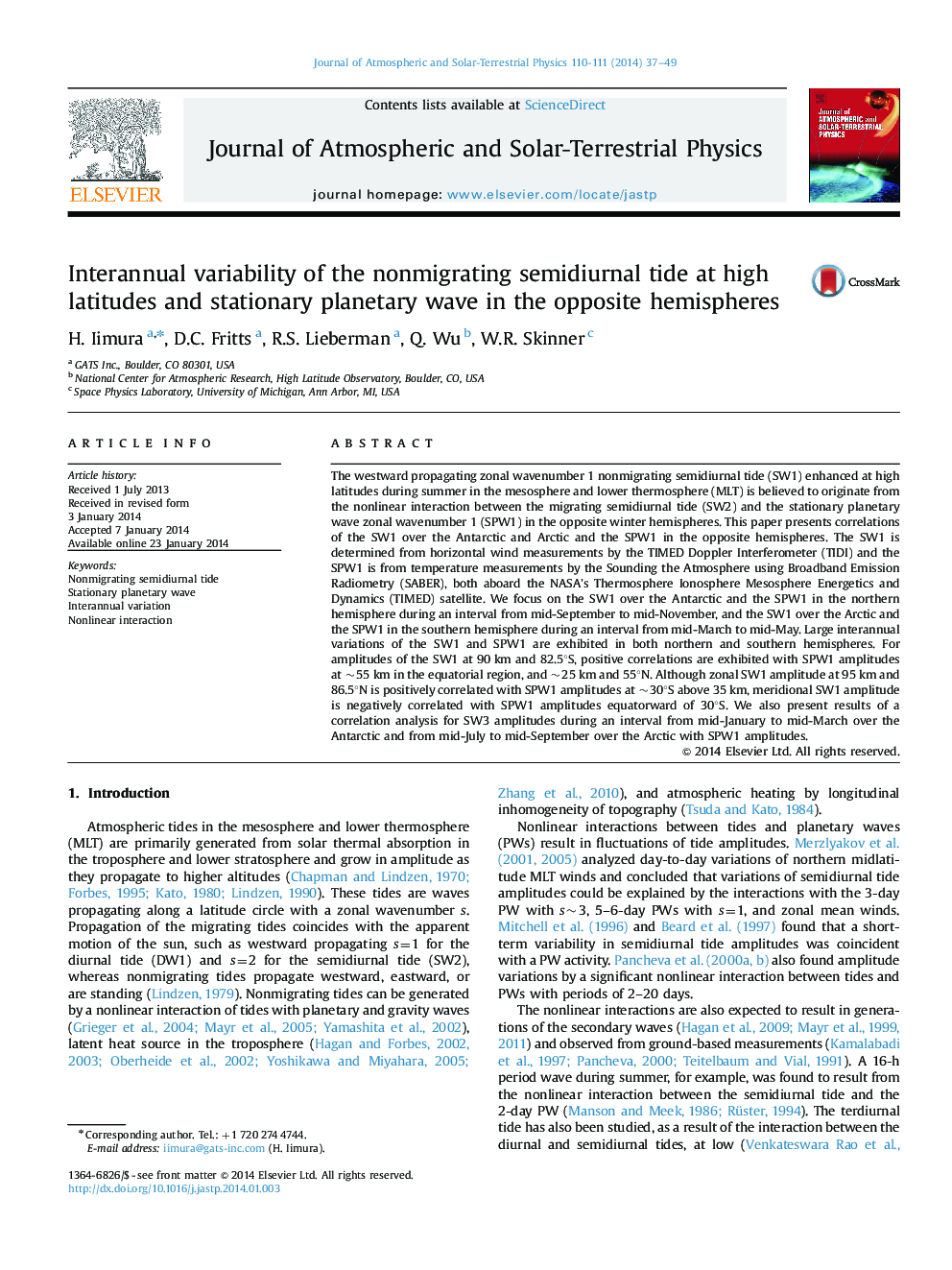| کد مقاله | کد نشریه | سال انتشار | مقاله انگلیسی | نسخه تمام متن |
|---|---|---|---|---|
| 1776607 | 1523628 | 2014 | 13 صفحه PDF | دانلود رایگان |
عنوان انگلیسی مقاله ISI
Interannual variability of the nonmigrating semidiurnal tide at high latitudes and stationary planetary wave in the opposite hemispheres
ترجمه فارسی عنوان
تنوع بین دوره ای جزر و مد نیمه مداری غیر مهاجر در عرض های بالا و موج سیاراتی ثابت در نیمکره های مخالف
دانلود مقاله + سفارش ترجمه
دانلود مقاله ISI انگلیسی
رایگان برای ایرانیان
کلمات کلیدی
جزایر نیمه مدور غیر مهاجر، موج سیارات ثابت تنوع بین سالیانه، تعامل غیرخطی،
موضوعات مرتبط
مهندسی و علوم پایه
علوم زمین و سیارات
فیزیک زمین (ژئو فیزیک)
چکیده انگلیسی
The westward propagating zonal wavenumber 1 nonmigrating semidiurnal tide (SW1) enhanced at high latitudes during summer in the mesosphere and lower thermosphere (MLT) is believed to originate from the nonlinear interaction between the migrating semidiurnal tide (SW2) and the stationary planetary wave zonal wavenumber 1 (SPW1) in the opposite winter hemispheres. This paper presents correlations of the SW1 over the Antarctic and Arctic and the SPW1 in the opposite hemispheres. The SW1 is determined from horizontal wind measurements by the TIMED Doppler Interferometer (TIDI) and the SPW1 is from temperature measurements by the Sounding the Atmosphere using Broadband Emission Radiometry (SABER), both aboard the NASA׳s Thermosphere Ionosphere Mesosphere Energetics and Dynamics (TIMED) satellite. We focus on the SW1 over the Antarctic and the SPW1 in the northern hemisphere during an interval from mid-September to mid-November, and the SW1 over the Arctic and the SPW1 in the southern hemisphere during an interval from mid-March to mid-May. Large interannual variations of the SW1 and SPW1 are exhibited in both northern and southern hemispheres. For amplitudes of the SW1 at 90 km and 82.5°S, positive correlations are exhibited with SPW1 amplitudes at ~55 km in the equatorial region, and ~25 km and 55°N. Although zonal SW1 amplitude at 95 km and 86.5°N is positively correlated with SPW1 amplitudes at ~30°S above 35 km, meridional SW1 amplitude is negatively correlated with SPW1 amplitudes equatorward of 30°S. We also present results of a correlation analysis for SW3 amplitudes during an interval from mid-January to mid-March over the Antarctic and from mid-July to mid-September over the Arctic with SPW1 amplitudes.
ناشر
Database: Elsevier - ScienceDirect (ساینس دایرکت)
Journal: Journal of Atmospheric and Solar-Terrestrial Physics - Volumes 110â111, April 2014, Pages 37-49
Journal: Journal of Atmospheric and Solar-Terrestrial Physics - Volumes 110â111, April 2014, Pages 37-49
نویسندگان
H. Iimura, D.C. Fritts, R.S. Lieberman, Q. Wu, W.R. Skinner,
